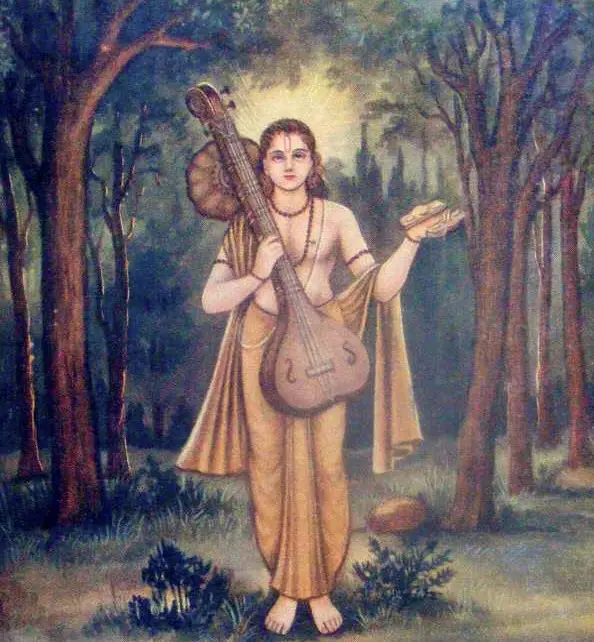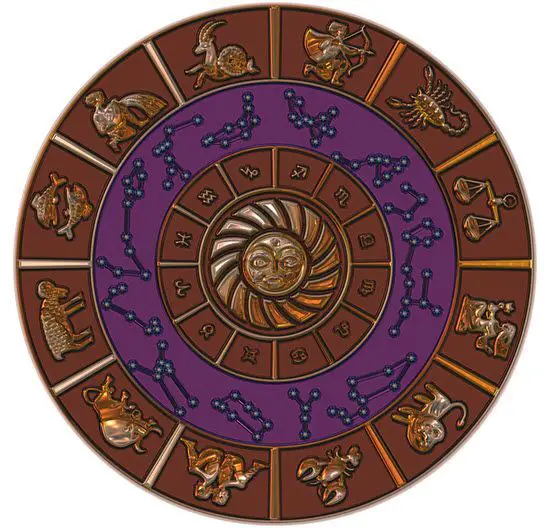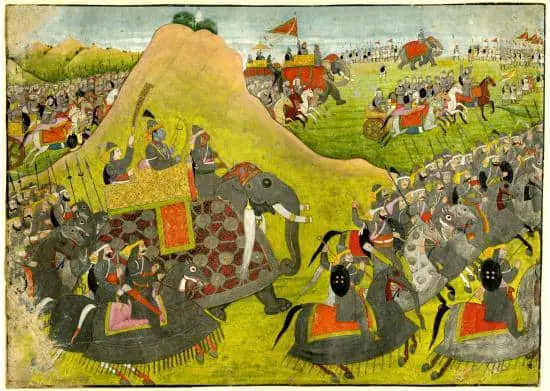The Narada Purana, also called the Naradiya Purana, is one of the two texts from Sanskrit. One is Major Purana, called Narada Purana, and the other is Minor Purana, called the Brihannaradiya Purana.
The texts in the Brihannaradiya Purana mainly focus on the worship of Lord Vishnu. The Naradiya text has 41 chapters in which around 8-9 chapters are about the worship of Lord Vishnu, and the other chapters are traveling guides for temples, river Ganga and other nearby regions.
The Naradiya Purana is noteworthy because it has 18 chapters that explain other major Puranas like Shiva Purana, Vishnu Purana, Brahma Purana, and many more. It also has a summary of other Puranas written in it. And there are also chapters where Buddha and his teaching are praised.

Table of Contents
History of Naradiya Purana
The text is named Naradiya Purana because it is believed that the great Vedic sage Devarsi Narada wrote this Purana himself.
He is believed to be a great musician and a monk who appeared in many Sanskrit texts. All the Major Purana accepts the existence and importance of the Naradiya Purana. And this Purana comes under the category of Major Purana as well as Minor Purana. And thus, there was confusion among all the scholars in the 19th – 20th century.
Therefore when texts were carefully observed, the later scholars said the Naradiya or Narada text was the Major Purana, and the Brihannaradiya was the Minor Purana.
The Naradiya Purana has 2 parts which first part is Purvabhaga and the second is Uttarabhaga. There are four sections in Purvabhaga – 125 chapters in total. There are 82 chapters in Uttarabhaga.
In the Brihannaradiya, there are 38 chapters and no sub-sections.
Studies about Naradiya Purana
There are fewer variations in Naradiya Purana. However, studies show that the Purana was written in the 16th and 17th centuries because it has terms like Islamic invasions inscribed in it.
It is also noted that methods of worship of Lord Vishnu written in this Purana are new and foreign to other Major Puranas.
Rajendra Chandra Hazra, a scholar, a Sanskritist, and well known for his studies and research in the Puranic literature, said quite different from what others said.
He claimed that the ways of worshipping Lord Vishnu in the Brihannaradiya Purana were written during the 9th century. But, according to him, the 41 chapters of Purvabhaga and the first 37 chapters of Uttarabhaga were written before the 11th century. Hazra further concluded that Brihannaradiya Purana was written before the Naradiya Purana.
He said it is unknown whether Naradiya Purana manuscripts that are used today also trace back to the 9th or 10th century. And many Sanskrit verses are missing from the currently surviving text.
Roacher, who was a famous Sanskrit scholar, said that the dates of the Puranas are uncertain. Again when Dimmitt and Van Buitenen did research, they said that it is not sure who, when, and where wrote the Major Purana and the Minor Purana.
The Padma Purana, one of the Major Purana, says that the Naradiya Purana represents goodness and purity and is called Sattwa Purana.
The Brihannaradiya Purana
As discussed, Brihannaradiya Purana revolves around the worship of Bhagwan Vishnu. The Purana explains the rituals and festivals of Vaishnavism.
There are many chapters of Mahatmya (travel guides) praising the river Ganga, shrines, and travel centers such as Prayaga (the place where the river Ganga and the Yamuna meet) and Banaras.
The text explains the duties of the Varna (Social class), Asrama (system of stages of life), Vrata, and summaries on Sanskara.
The Naradiya Purana
The style of writing and explaining things is the same in Naradiya Purana as in Brihannaradiya Purana for the first 41 chapters. And the rest of the chapters are like the encyclopedia where various topics are discussed.
The encyclopedia sections describe the topics like six Vedangas (six supplementary disciplines of Hinduism), Moksha (salvation), Dharma, Adhyatma-philosophy, a guide for worshipping Lord Ganesha, Lord Vishnu and his incarnations (Mahavishnu, Rama, Krishna, Hayagriva, Narasimha), Lakshmi, Shiva, Hanuman, and all the goddesses. The text praises Radha and says she is the one who worships all the gods and goddesses.
The praises and various descriptions in this text are not only limited to Hinduism, but it also praises Buddha and various other traditions.
It is noted that Kurma Purana, in some places, is impolite to Buddha but hasn’t mentioned his name. On the other hand, Buddha’s praises can be seen in many of the major Puranas.
Many chapters of Purvabhaga from 92-109 have an excellent summary of all the 18 Major Puranas. One chapter is dedicated to each Purana.
In the chapters of Uttarabhaga, topics like flora, fauna, dance, tradition, jewelry, weapons, and war theories are discussed.
In the Naradiya Puran, King Rukmangadacarita’s legend is also mentioned. He was a great devotee of Lord Vishnu and was always tested by the temptress Mohini (Lord Vishnu’s female incarnation). This subject is often shown in the Hindu plays and dance arts in Indian culture.
The text also has geographic compilation and travel guides for Bengal, Bihar, and Nepal.
The stories from Narada Purana
As you now know that Narada Purana is not just about one religion, culture, or tradition. There are numerous explanations for every Major Purana, and all gods and goddesses are mentioned in this text. Therefore, there are many valuable stories in this Purana.
Let me narrate to you one of the amazing lesson-teaching stories.
Once, a great musician named Tumbaru happened to sing much better than Narada. So once, Tumbaru went to Vaikuntha, the abode of Lord Vishnu, and performed. His performance pleased lord Vishnu so much that Vishnu showered him with precious gifts.
Hearing this, Narada, who was the biggest devotee of Lord Vishnu, got jealous, and he too went to Lord Vishnu to perform, but he wasn’t good, and Vishnu was displeased. Narada even procured a boon from Lord Shiva to become an expert singer but still couldn’t make lord Vishnu happy.
At last, Narada gave up his ego and went to learn singing from Tumbaru and then performed in front of Lord Vishnu. This time he finally succeeded in making Vishnu feel delighted.
Stories like these teach us that we should not be jealous and learn things from those who are better than us.

I hope you liked this article on Narada Purana. Please share this article with your family and friends on social sites.




